Over millions of years the rivers and the ice have been working incessantly to capriciously chisel the limestone and dramatically shape this massif. No matter from which angle you approach it, the Picos de Europa National Park (https://www.turismoasturias.es/en/) is truly impressive. Steep, rocky, tall, wild, but also green and full of life.
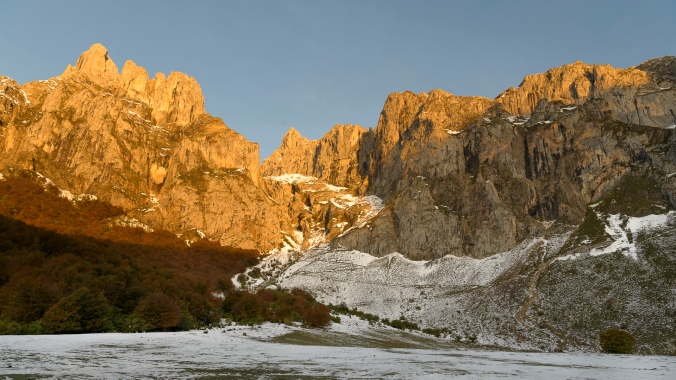
Picos de Europa
We sort of start our visit near the village of Potes, at the foot of the Fuente Dé cable car. The snow covers the ground and the hillsides of the mountains. The weather has been pretty unstable, but here it doesn’t rain, so we decide to take the cable car up the hill. As soon as we get up a thick mist covers the mountains and doesn’t clear up till short before sunset, when the peaks of the surrounding mountains start to unveil from behind the fog at the whims of the wind.
The morning after the weather totally clears up, allowing magnificent views of the frosted hillsides at the pretty light of the sunrise. The mountains are also house to lost of wildlife, amongst others chamois, which are extremely elusive, and vultures.
The landscape along the narrow roads is very nice at this time of the year, with some mountainsides powdered with snow, some carpeted with trees dressed in autumn colours and friendly cows grazing peacefully everywhere.
We hold our breath while we drive through a steep and very narrow and windy road towards the little village of Caín, which is the beginning of the Cares Gorge trail.
The Care route is a spectacular hike of about 12 Km, straight through the heart of the gorge, which is truly breathtaking. It runs along caves, bridges and paths sculpted in the rock.
After a failed attempt to taste some of the strong blue Cabrales cheese in one of the caves where it is produced, we take the funicular up to the tiny village of Bulnes. Anchored at 649 meters of altitude and with some 35 inhabitants, which are just connected to the rest of the world down below by the funicular and a very steep walking path. We decide to walk down after eating a big plate of the traditional white bean stew, fabada. The descent is vertiginous, but quite beautiful, since it goes in parallel with the river and next to high vertical walls that the river has carved.
Another twisty steep road takes us to the Covadonga lakes where, apart from the majestic landscape with the lakes and the backdrop of the high snowy mountains, we are surprised and delighted and to have a casual and fun encounter with Martin and Geraldine from Wild Photography Holidays (https://wildphotographyholidays.com), who are there with a photography group. The world is truly really small, as they say.
After a very nice breakfast with them and the group, we follow the advice and head up to the little village of Asiego, which is very much off the beaten track. As we stroll along a narrow cobbled street, we see a couple of men who are producing artisan cider in a little cellar. One of them spots our curious looks and kindly invites us to go in and observe the whole process. We enjoy learning about the process. They are very friendly and invite us to have a freshly pressed glass of apple juice before we head off, on our way to the coast.



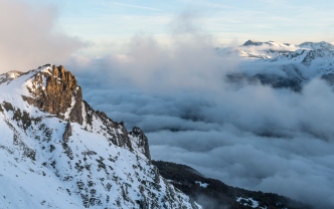




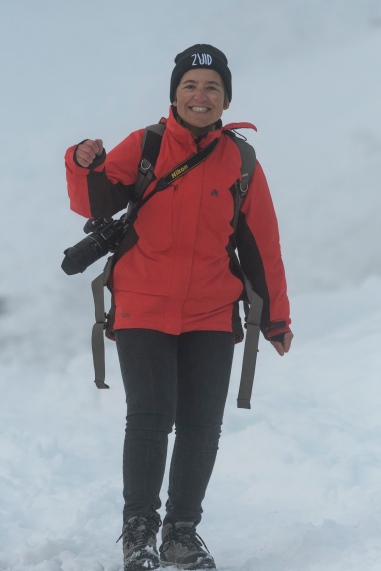
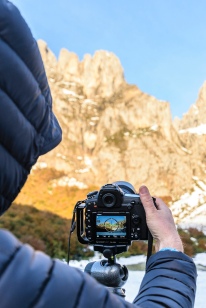



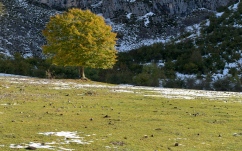














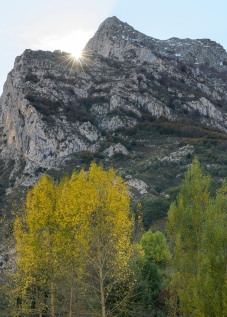















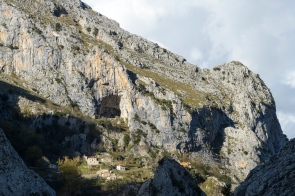






















Lovely to meet you both last Friday, we enjoyed your story and the beautiful pictures!
See you next time, take care and enjoy,
Bernadet
LikeLiked by 1 person
Hi Bernadet,
it was very nice to meet you too and we had a nice pleasant evening with you guys.
We look forward to the next time and in the meantime good luck with all your coming magazines.
Christian & Isabel
LikeLike